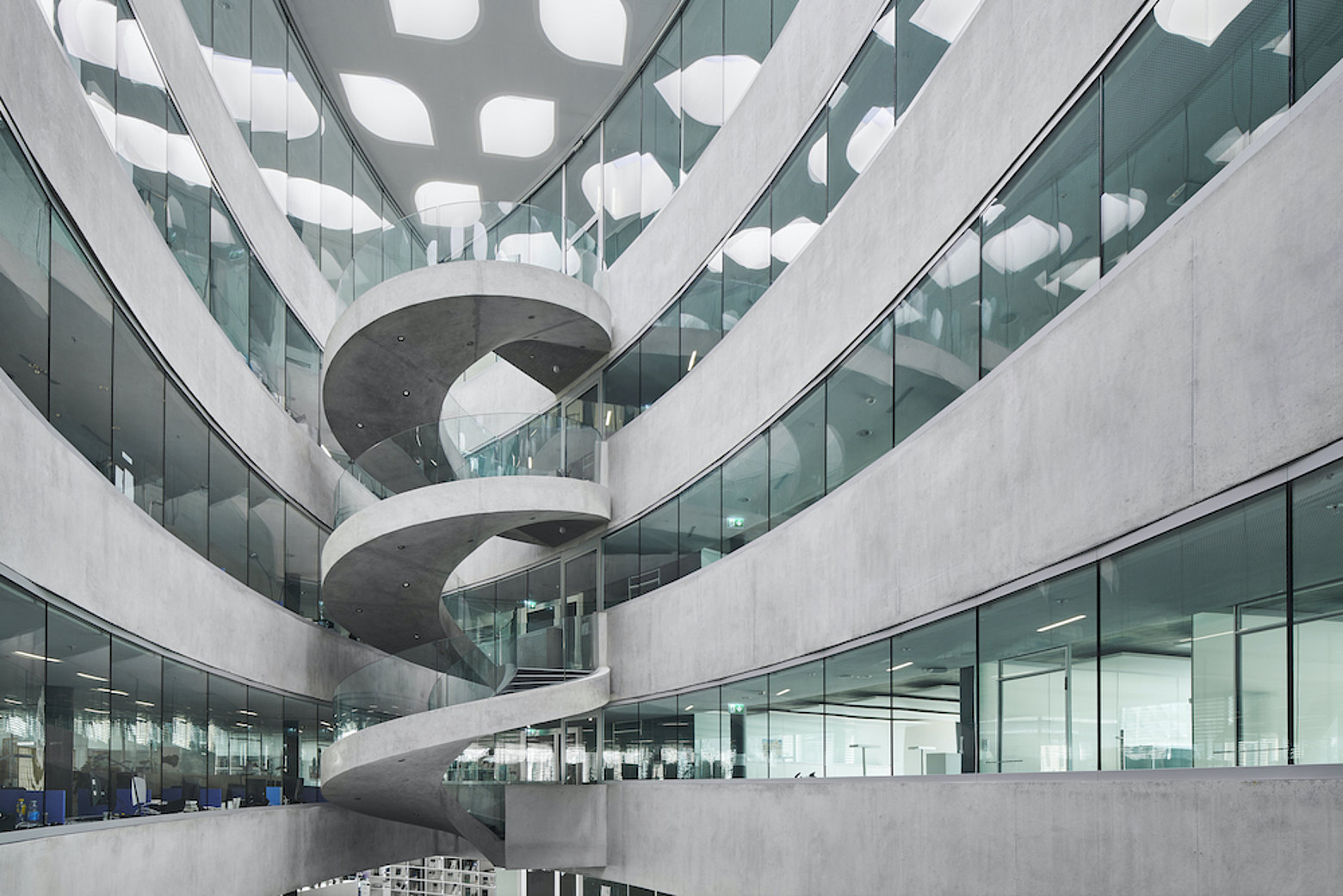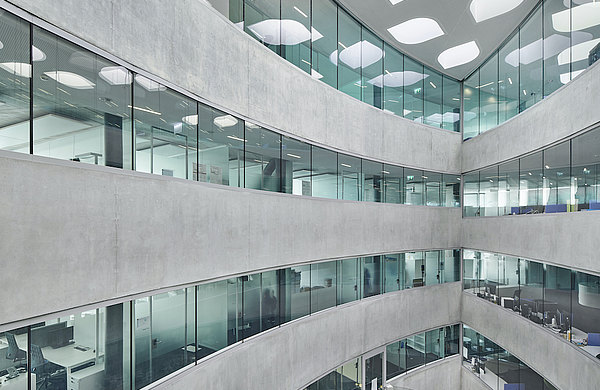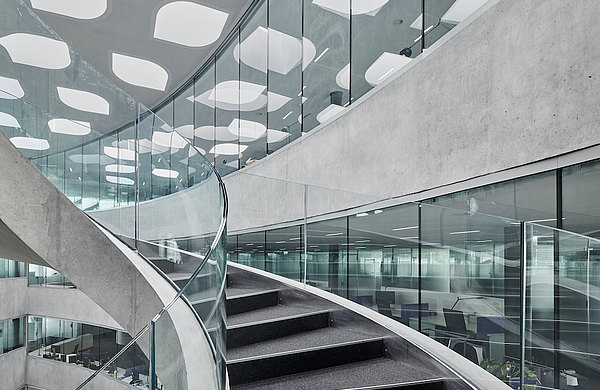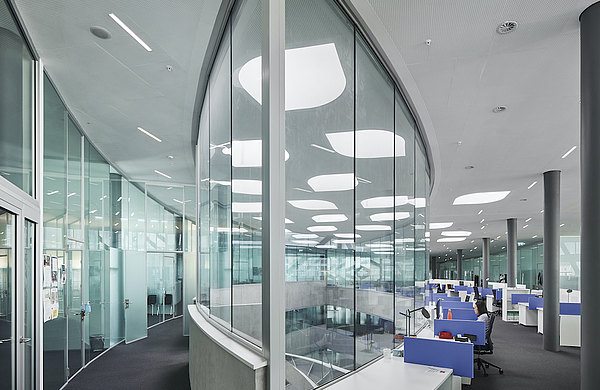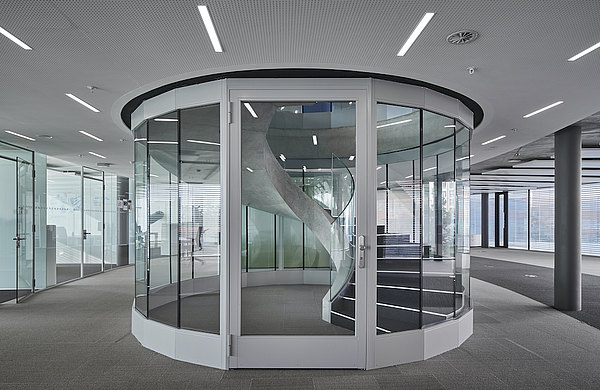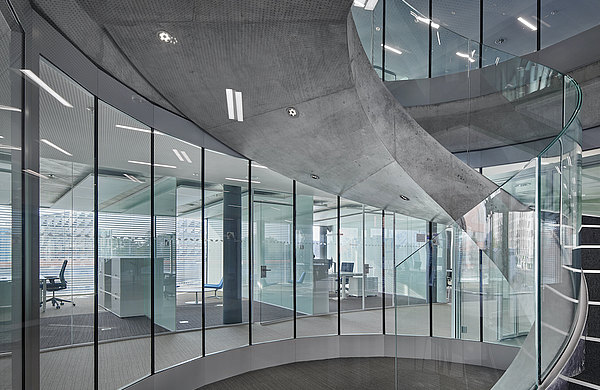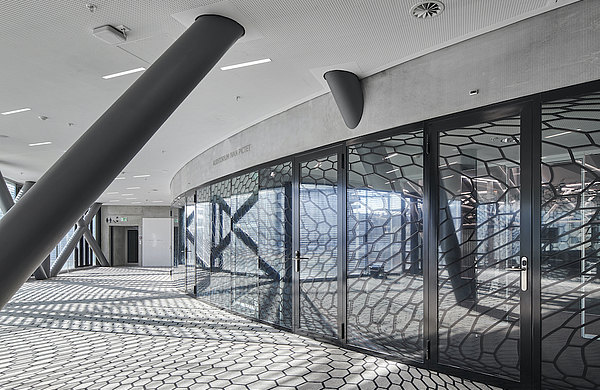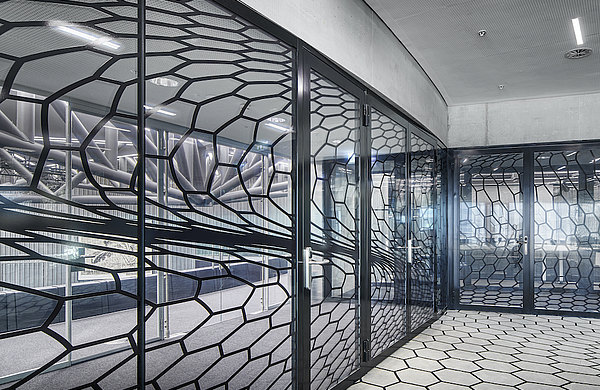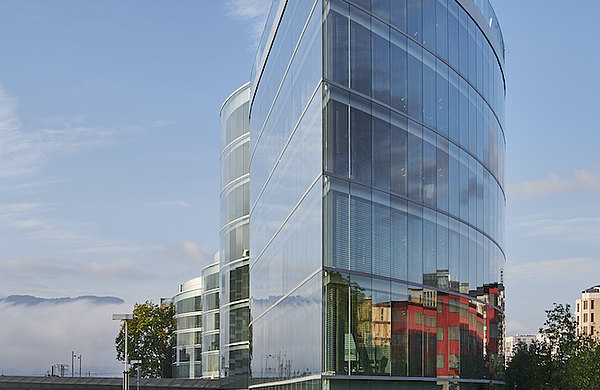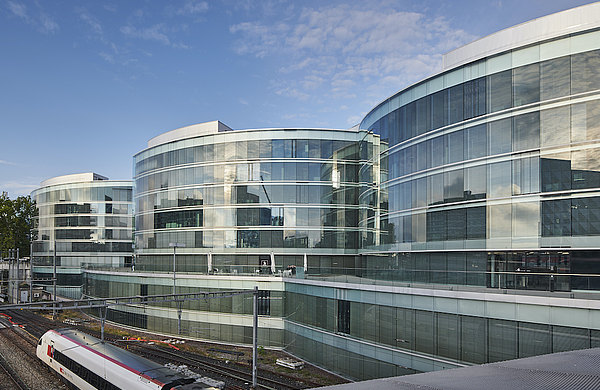Maison de la Paix, Geneva
Renovation of a prestigious Swiss research and educational institution
As an educational and research institution, the Graduate Institute of International and Development Studies (IHEID) in Geneva is committed to promoting interdisciplinary dialogue on issues of international relations. Located west of the Geneva-Sécheron railway station, the "Maison de la Paix", completed in 2013, is the heart of the campus of the same name. The architecture by Éric Ott of IPAS in Neuchâtel symbolises a certain prestige. When it recently became necessary to renovate the interior façades and parts of the access elements, products from the Swiss company Forster Profilsysteme AG were chosen.
After the end of the First World War, IHEID – then called the Geneva Graduate Institute of International Studies – was founded in 1927 with the aim of promoting diplomacy and international relations and thus preventing the devastating experiences of war. Since 2013, the "Maison de la Paix" in Geneva has been the most recent architectural expression of the headquarters of the research and educational institution. In addition to IHEID's administration and teaching facilities, the new building also houses about a dozen international peace organisations, including three institutions funded by the Swiss Confederation. These include the Geneva Centre for Security Policy (GCSP), the Geneva International Centre for Humanitarian Demining (GICHD) and the Geneva Centre for Security Sector Governance (DCAF). Generally, the Maison de la Paix also sees itself as a place for meeting, discussion and reflection on issues and trends in the field of peacekeeping and strengthening international relations.
Expressive architectural language inside and out
In 2008, the architectural firm Eric Ott won the competition for the "Maison de la Paix" project. Five years later, Mr Ott, together with his office IPAS, created a complex of six individual buildings that are symbolically reminiscent of petals in terms of their shape and arrangement. The individual neighbouring, lenticular, tapering volumes meet and come together at acute angles to form an organic unit. The entire complex is enveloped by façades shimmering with a bluish hue. Their regular, flowing curves lend them an exceptional clarity, and dynamism through the effect of reflection and transparency. This transparent design principle is continued to a large extent in the interior environment. Large, light-flooded atriums echo the oval shapes of the exterior lines, resulting in a complete absence of straight surfaces. The combination of this interior glazing with the sculptural spiral staircases and the load-bearing elements of the building define the sober character of this project. From this ensemble emerges a vision of structural elements in exposed concrete, softened by the ubiquitous presence of mullionless glazing.
Renovation of the interior glazing
Only a few years after completion, all the interior glazing had to be replaced due to a design flaw. This included the interior glazing in the atriums, spiral staircases, auditoriums, kitchenettes, as well as some of the glazing in the transitions between the spaces on the floors. The client opted for the use of Forster profile systems, which were able to fully meet the structural, normative and aesthetic requirements. A total of 41 single-leaf and double-leaf fire resistant and escape route doors with forster fuego light EI30 enable optimal fire protection partitioning. In addition, 1375 square metres of forster fuego light EI30/EI60 fixed elements made of edge-to-edge glass without intermediate mullions provide maximum light in the interior glazing of the atrium, auditorium and kitchenettes. The glass elements therefore not only ensure the functionalities of fire protection, fall protection and partitioning, but also contribute as a transparent envelope to the aesthetics and symbolism of this contemporary architectural icon, which is known far beyond the country's borders.
Geneva, Switzerland
Products: single-leaf and double-leaf fire resistant doors forster fuego light El30, glass elements – connected with butt joints – forster fuego light El30/El60
Architecture: IPAS Architectes SA – Éric Ott, Neuchâtel (CH)
Metal fabrication: Progin SA, Bulle (CH)
Client: IHEID (Institut des Hautes Etudes Internationales et du Développement), Geneva (CH)
Photography: Damian Poffet

